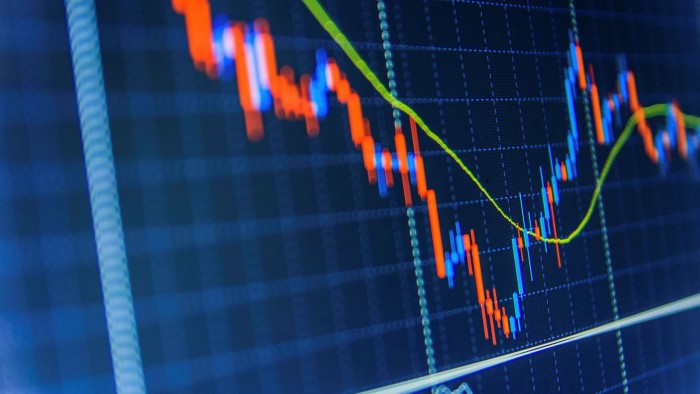Treasury yields fall after savage bond sell-off abates

Simply sign up to the Capital markets myFT Digest -- delivered directly to your inbox.
Prices on US Treasuries rallied on Friday, following the most turbulent day for the world’s biggest bond market since the height of coronavirus-induced ructions in March last year.
The yield on five-year Treasuries, which were at the centre of a fierce rout in US government debt on Thursday, fell back to 0.73 per cent. When bond prices rise, yields fall. Meanwhile, the yield on the 10-year note slid 0.1 percentage points on Friday to 1.4 per cent, having leapt to a fresh 12-month high of 1.6140 per cent on Thursday.
Technology stocks, which were at the centre of a brutal equity sell-off on Thursday, rebounded, too. The Nasdaq Composite index closed the week up 0.6 per cent, bouncing back on Friday from a 3.5 per cent tumble the day before — the tech-heavy benchmark’s worst fall since October.
Wall Street’s blue-chip S&P 500 index, however, was down 0.5 per cent at the closing bell, falling back from gains earlier in the day.
An increase in interest rates poses a particular threat to big tech and other Wall Street high-flyers that have dragged up stock markets throughout the recovery. Those companies’ sky-high valuations have been propped up by the low-rates environment, which raises the present value of their future cash flows. But if rates go up, the present value of future earnings falls.
“Suddenly, things that are far away, they start to go down in value quickly. That’s what people are concerned about,” said Kathryn Kaminski, a portfolio manager at AlphaSimplex Group. “But the Nasdaq has recovered more, that’s a positive sign,” she added.
Stocks in Europe ended the week lower, with the region-wide Stoxx 600 index closing down 1.6 per cent, taking its losses since Monday to 2.4 per cent. London’s FTSE 100 benchmark shed 2.5 per cent on Friday and Frankfurt’s Xetra Dax slipped 0.7 per cent.
Bond market nerves were also visible in Asia-Pacific’s equity markets. Japan’s Topix index closed down 3.2 per cent, while the S&P/ASX 200 benchmark of Australia’s blue-chip shares dropped 2.4 per cent. Hong Kong’s Hang Seng index shed 3.6 per cent and mainland China’s CSI 300 lost 2.4 per cent.
The equity volatility came as larger concerns grew among investors that the worldwide economic recovery from the pandemic could generate inflationary pressures, causing the US and other central banks to tighten monetary policies.
“With the US economic outlook boosted by pandemic improvement, vaccine distribution and the prospects of President [Joe] Biden’s fiscal package getting through the Congress, investors are now fixated on the risk of inflation and economic overheating,” said Tai Hui, chief Asia market strategist at JPMorgan Asset Management.
Investors’ focus is turning to how central banks will react to surging bond yields and concerns over asset price bubbles.
The Reserve Bank of Australia announced on Friday that it would make an unscheduled A$3bn ($2.3bn) purchase of three-year government bonds to defend its yield target at that maturity.
Government bond yields rose sharply in Australia this week while its currency is trading at a three-year high against the dollar as the country’s economic recovery from Covid-19 has gained momentum.
Traders in Tokyo also speculated that ructions in global markets could push the Bank of Japan to step into bond and stock markets to prevent yields on the 10-year Japanese government bond from rising above 0.2 per cent and to support the Topix.
Selling early in the session in Tokyo had sent yields on Japan’s benchmark 10-year government bond to 0.178 per cent — the highest level since the BoJ announced it would introduce a negative interest rate policy in early 2016. The yield later stabilised at 0.165 per cent.
Investors have come to believe that the BoJ will act to prevent 10-year JGBs from moving outside a range of roughly 0.20 percentage points on either side of zero, analysts said.
Takeo Kamai, head of execution services at the brokerage CLSA in Tokyo, said the drop in the Topix meant it was all but certain that the BoJ would make a big purchase of exchange traded funds for the first time since January 28.
“They will do it, but it won’t make that much difference. Really, people are just following what the long and short-dated US Treasuries are doing,” said Kamai, adding that the recent surge in Japanese equities that took the Nikkei 225 index to 30-year highs had never been driven by a strong domestic catalyst.
“Japan was just part of the global euphoria, so when [stocks] fall down, they fall down quickly,” he said.
Comments